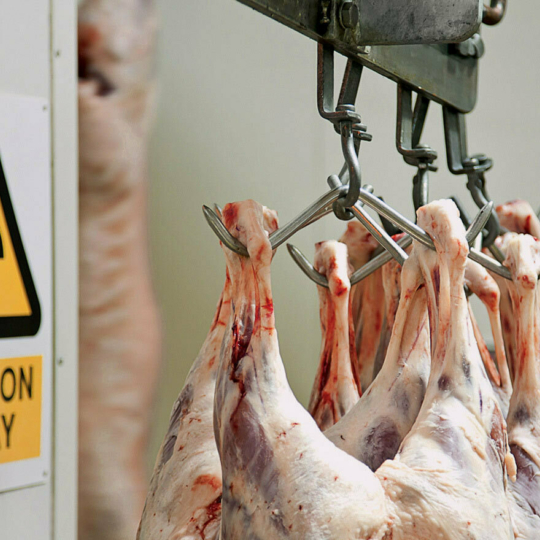Select your region / language
Automated X-Ray Technology: Transforming the Australian Red-Meat Industry

Automated X-Ray technology is transforming the Australian red-meat industry by providing improved yield through the accuracy of cutting.
Developments in lamb processing by Scott in partnership with the Australian Lamb Company, JBS Australia and Meat and Livestock Australia (MLA) are seen in three key pieces of X-ray technology; DEXA, X-Ray Grading and the X-Ray Primal system. These pieces of technology improve the yield, which has a multitude of benefits to processors adopting this automation. Greenleaf Enterprises (Phil Green et al), has undertaken an independent economic analysis that has identified the main benefits as yield improvement, with additional gains in the areas of operator safety, food safety and productivity increases.
An additional benefit as Processor Terry Nolan told ABC News is that X-Ray Technology, like DEXA, was an introduction to wider automation for meat processors.
"If we can get an accurate skeletal diagram of the carcass and adopt that into an automated chain, with a robot programmed to cut a particular joint, to me that is where the real benefits will come as a lead-in to automation"
The Scott X-Ray Grading system is just one of the X-Ray technologies transforming red meat automation. This patented system determines the skeletal structure of a carcass, finding the ideal cut points for separation of the Forequarter, Middle and Hindquarter. The X-ray data collected also provides more information about the carcass composition.
Similarly, the X-Ray Primal System creates a 3D map of the bones within the lamb carcass, providing the correct height and angle measurements for each cut. This data guides the primal cutter with an accuracy far greater than human capabilities, improving the quality and yield of each cut.
Another piece of transformative technology is DEXA, or Dual Energy X-Ray Absorptiometry. This flagship technology provides a measurement of lamb carcass composition, which is used to provide a measure of lean, fat and bone ratio for each product. While DEXA has been used for decades in the medical industry to measure bone density and body fat composition, for the red meat industry DEXA technology provides timely, accurate, transparent and objective information on lean meat, bone and fat composition of each carcass.
Lucinda Corrigan, who served as the Chairman of MLA Donor Company, noted that the resulting improved yields seen when using X-Ray technologies like those provided by Scott, enables processors to extract more value from the carcass and pass some of these benefits back to producers with improved pricing. She also noted the need for players who will go out on a limb in automated processing, like ALC and JBS, world-leading technology providers, such as Scott and the invaluable R&D support, which MLA provides, as key drivers in transforming Australian red-meat processing.
In 2017 MLA announced a $10 million investment to accelerate the adoption of X-Ray technology, partnering with meat processing plants around the country to support the installation of DEXA measurement systems. “This project will enable supply chains and the businesses within them to drive new efficiencies, generate more value and better meet market demands, which ultimately improves our industry’s international competitiveness,” said Richard Norton of MLA.
The widespread introduction and adoption of X-Ray technologies among red-meat processors is the key to future efficiency savings. Being able to maximize the value of carcasses through the data provided with X-Ray technologies offers improvements in cutting, as well as increasing productivity – which MLA believes is vital to the sustainability of the Australian red meat industry.
This video demonstrates the developments by Scott Automation & Robotics in lamb automation with our Australian partners, Australian Lamb Company, JBS Australia and Meat and Livestock Australia.


